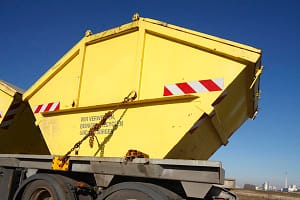Industrial shelving can be the backbone of an organised warehouse. Choosing the right type of shelving can make a world of difference in storage capacity, accessibility, and overall efficiency.
1. Customised shelving solutions
One size does not fit all when it comes to shelving solutions. Evaluate your inventory and storage needs to determine whether you require heavy-duty pallet racks, cantilever shelves for long items, or compact shelving for smaller items. Customising shelving units to match your inventory characteristics maximises space utilisation.
Vertical space utilisation
Warehouses often have substantial vertical space that goes unused. Utilise tall industrial shelving units to make the most of this space. However, always ensure that shelving units are stable and safe, especially if they are stacked high.
FIFO and LIFO systems
Implement shelving layouts that align with your inventory management strategy. FIFO (First-In-First-Out) shelving ensures that products with shorter shelf lives are accessed and shipped first. On the other hand, LIFO (Last-In-First-Out) shelving might be suitable for products that are less time-sensitive.
2. Streamlining with storage boxes
Storage boxes are often overlooked but versatile tools that not only keep items organised but also protect them from damage. Here’s how you can incorporate them effectively to boost your business’ day-to-day efficiency:
Categorisation and labelling
Before placing items in storage boxes, categorise them based on factors like size, type, and frequency of access. Clearly label each box with its contents. This minimises search time and prevents the need to open multiple boxes to find a specific item.
Standardisation
Opt for uniform storage boxes whenever possible. Standardised box sizes are easier to stack and optimise shelving space. They also contribute to a neater and more organised appearance.
Durable materials
Invest in high-quality storage boxes made from durable materials. For industries with specialised needs, such as those requiring temperature-controlled environments, choose boxes that can withstand the required conditions.
3. Efficient space utilisation
A well-organised warehouse maximises space utilisation, which can lead to significant cost savings and increased operational efficiency.
Racking systems
Besides industrial shelving, consider utilising racking systems such as mezzanine floors or multi-tiered racks. These systems create additional levels for storage, effectively doubling or tripling your available space.
Aisles and pathways
Strategically plan the layout of aisles and pathways to ensure smooth movement of personnel and equipment. Implement a systematic arrangement that reduces congestion and minimises the time spent navigating the warehouse.
Dynamic slotting
Regularly review and adjust the placement of items based on their demand and turnover rate. High-demand products should be placed in easily accessible areas, while slower-moving items can be stored in less accessible locations.
4. Inventory management and technology integration
Incorporate technology-driven solutions to enhance your warehousing operations:
Inventory management software
Invest in robust inventory management software that tracks stock levels, reorder points, and order fulfilment. This not only prevents stockouts but also provides insights into inventory turnover and trends.
Barcode and RFID systems
Implement barcode or RFID systems for efficient tracking and identification of products. These technologies streamline the picking and packing process, reducing errors and saving time.
Automation and robotics
Depending on your warehouse’s size and requirements, consider integrating automation and robotics. Automated guided vehicles (AGVs) can transport goods, while robotic systems can assist in picking, packing, and even shelving optimisation.
Conclusion
Efficiency in B2B warehousing and storage is a multifaceted endeavour that requires careful planning, the right tools, and a commitment to continuous improvement. By focusing on optimising space utilisation, and integrating technological solutions, businesses can streamline their warehousing operations, reduce costs, and provide top-notch service to their customers. Remember, an efficiently managed warehouse is the cornerstone of a successful B2B enterprise.






Leave a Comment